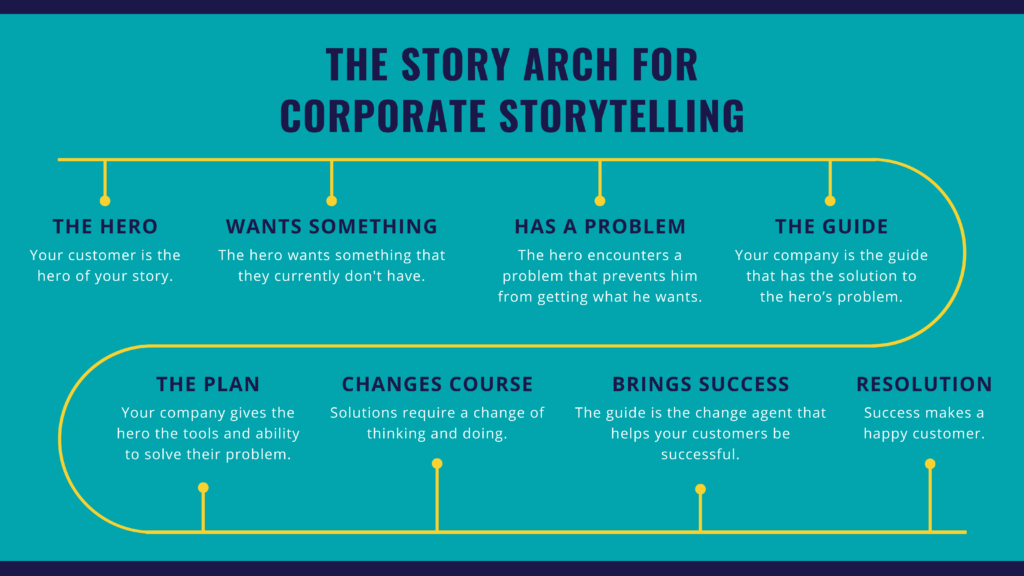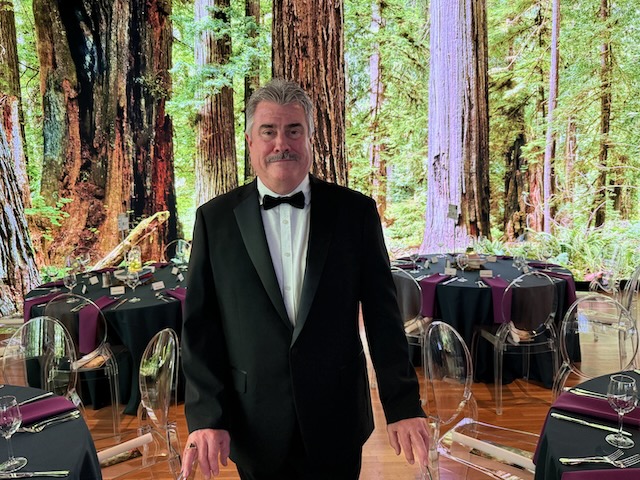A major focus of big business today is video storytelling and with good reason.
Presenting the target audience with a visual narrative is much more compelling than what has flooded the market for the last 20 years. Some company videos come across more like elaborate PowerPoint presentations with the standard list of dull facts and figures.
Testimonial videos with numerous talking heads, while considerably more genuine, have become too predictable. Also, the public has become immune to hype in the form of cutesy animation and commercial noise.
And who’s watching TV commercials anyway in this bing-watching era of Netflix, Prime, and Hulu.
In general, the viewing public is looking for more substance (shall I say “where’s the beef”) and they are finding it in a medium that is as fundamental to humanity as basic food and water: storytelling. Neurologists tell us that our brains are actually hardwired for stories. [1] We are naturally drawn to them.
Think about it. Who is the life of a party? It’s the person who is telling the best story. And it makes sense.
Telling stories is how society connects with others, makes sense of the world, and how it formulates relationships.
In ancient times, storytelling was basic to the human experience and how one would interpret the world around them. Nations, religions, families, companies, and individuals have always been built on substantial stories.
For example, picture any religion. It has a holy book full of narratives in which people have interpreted the events of their world as messages from a god or higher power. These narratives have provided humans with purpose and direction for thousands upon thousands of years. In all aspects of life, we need stories.
Let’s apply this to today.
As companies, we are all competing for attention in the current world of social media. However, to cut through the noise, consider cultivating relationships with your online audience by telling them authentic, meaningful stories.
If these stories are about making a difference in the lives of others, you will win trust and engage the emotional core of your audience.
It’s because when we watch or read a story, we walk in the heroine’s shoes. We see life through her eyes. That creates empathy that draws us deeper into the narrative. For a while, we own her story and that in itself is powerful.
The main goal is to get your audience to own your story.
In order to understand why storytelling is so persuasive, we need to understand the classic story arch that has been central to storytelling for millennia. Every compelling narrative has a basic structure that quickly captivates the audience so they can’t wait to find out what will happen next.
Stories begin with a hero (or heroine) who wants something. But they face a problem that keeps them from getting it. The problem, expressed in the form of an antagonist, proves to be a formidable foe.[1]
The antagonist reveals, scene-by-scene, that the hero is simply not up to the challenge alone. So, another person comes alongside as a guide and helps them develop a plan which enables the hero to overcome their obstacles. But the problem they face is big and requires a decision that will eventually call them to change course.
By nature, the hero does not like change and who does? It takes someone else to call them to action and help them make a concrete decision for change. And implementing change enables the hero to overcome their problem and to find success.
So how does this apply to corporate storytelling?
It puts your company in the strongest position to tell a story the audience can relate to; a story about people like them. They are the hero of your story. It’s about finding out what they want and solving their problems.
This is often a big adjustment for marketing managers in medium-sized companies. As a whole, the company wants to be the heroes of their own stories. To ensure the audience identifies with the message, you must make the story relative to their lives and about them, not about you.
Just think of P&G’s commercials.
Was Mr. Clean truly the hero? Did Mr. Clean ever do the cleaning? No, Mr. Clean simply introduced the product.[2] The mom was the heroine of the story, just as every mom in America was the heroine of her own family’s story. Because of Mr. Clean, moms everywhere could clean their kitchens better and faster.
You see? P&G made moms the hero of their stories and that is brilliant.
If customers are the heroes of our stories, we must know what they want.
And in order to understand customers’ needs, P&G regularly will spend a great deal of time in the homes of people who use their products.
The Swiffer Sweeper was developed because a mom told a P&G team (that watched her use cleaning products at home) that what she really wanted was to have less cleaning products taking up space in her closet. Wisely, P&G listened and eventually created the Swiffer. Stated simply, a bottle of Mr. Clean was mounted on a mop handle that released the liquid onto a small diaper that could be thrown away after use. No more need for all the brooms, mops, buckets, cleaners, towels, etc. P&G understood what she really wanted and provided a solution: to have one product at home, not five.
For corporate videos to be effective, we must also know our clients’ problems and the obstacles that our customers face.
Let’s turn to Star Wars for a good story example of this. In Star Wars: A New Hope, Luke Skywalker wants to get off the planet of Tatooine and to join the Rebel Alliance. However, he has several significant problems. His family is poor and without financial resources to get him off the planet and he faces a brutally powerful foe: the Galactic Empire. Luke can’t possibly overcome such formidable obstacles on his own.
In a corporate story, you need to include the problems your clients wrestle with. Often companies only want to talk about their accomplishments, but what makes us addicted to a good myth is watching the hero struggle with an obstacle that seems insurmountable. This in itself pulls us deeper into the hero’s journey. And in storytelling, the bigger the problem, the more intriguing the story and the greater the need for help.
Now, it’s time for your company to enter the scene. You are the guide that comes alongside your customer to help them solve their problem.
Let’s turn back to Star Wars for examples. As we said, Luke Skywalker has no ability to get off of Tatooine and certainly isn’t prepared to defeat The Empire. Subsequently, two guides enter his life over the course of the trilogy to serve as mentors: Obi-Wan Kenobi and Yoda. Without Obi-Wan’s guidance, Luke would never have gotten off Tatooine and without Yoda’s training, Luke wouldn’t have learned the ways of the Force to become a Jedi Knight.
So, here is the great news!
You are the trusted guide that your clients are looking for. No one wants to be sold to because immediately defenses rise. But we all want someone to help us become the hero and to succeed.
Your corporate story is about how you help clients solve their problems and make them successful. You are the guide that comes alongside them with a plan or product to help them achieve their goals. But remember this, because you truly helped customers succeed, you become the hero in their minds.
And that ensures repeat business.
Guides have a plan that calls for decisions and change. Just as Yoda gave Luke a plan for learning the ways of the Force, we as companies have plans for our clients. Our plans include calls to action that change the status quo. Without change, the hero can’t get what they desire. Luke wanted to help the Rebel Alliance while confronting his father, Darth Vader and it was Yoda’s role to challenge him to embrace a new way of seeing and doing. As a result, Luke fulfilled his destiny and ultimately won over Darth Vader in his final moments.
In a corporate video that follows the classic story arch, you get to showcase how your plan brings genuine solutions to clients, enabling them to overcome their problems and achieve success.
In the end, you have made a positive difference in the quality of their lives and that has heart appeal. Stories that engage customers’ hearts, give you time to change beliefs and shape behavior. And that will inspire action towards any brand.
At Barking Squirrel Media, we are passionate about the art of storytelling. We thrive on partnering with companies to help them craft stories that will truly increase their bottom line. Call or email us today for a free consultation.
by Dr. David K. Bray
President, Barking Squirrel Media
[1] I am deeply indebted to the works of Donald Miller in his book Building a Brand Story and John Truby in Anatomy of Story: 22 Steps to Becoming a Master Storyteller. I highly recommend reading them both.
[2] Check out Shane Meeker’s book StoryMythos.
[3] Check out Shane Meeker’s book StoryMythos.



